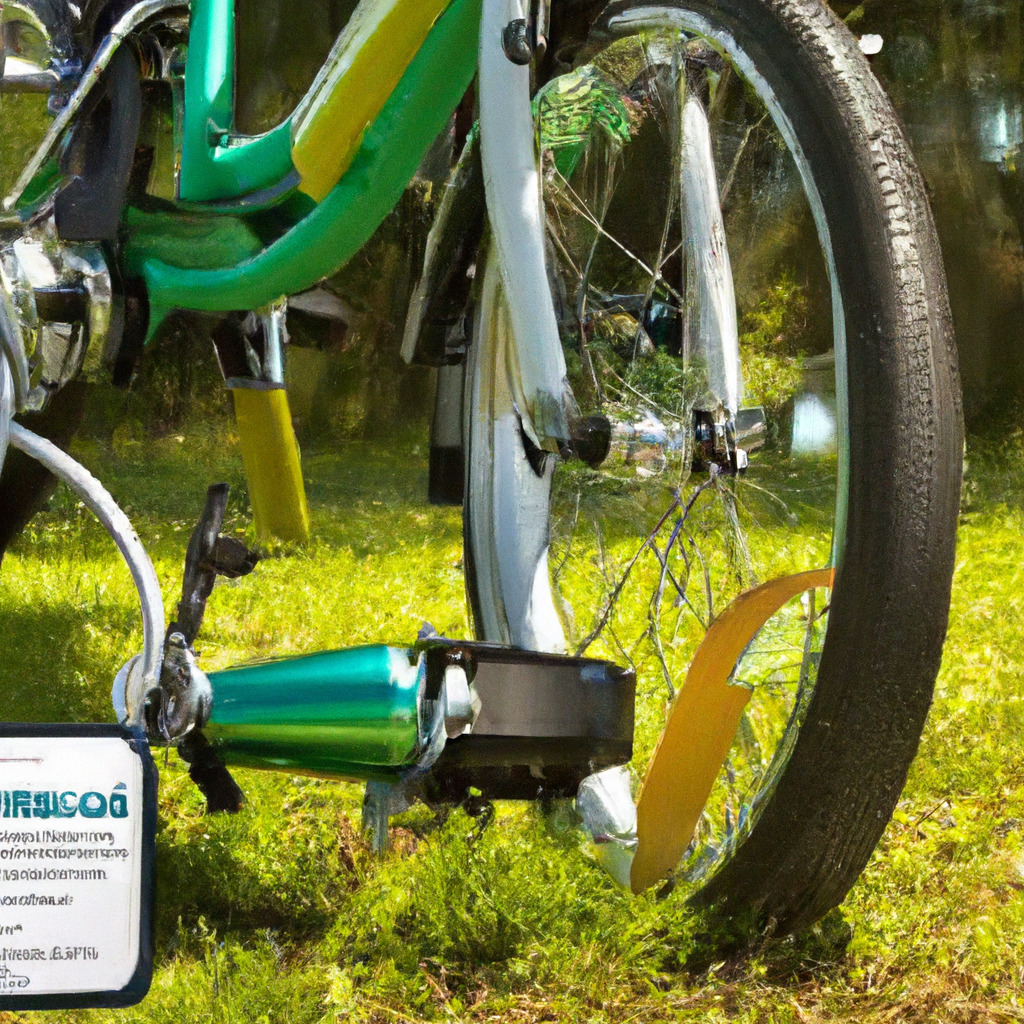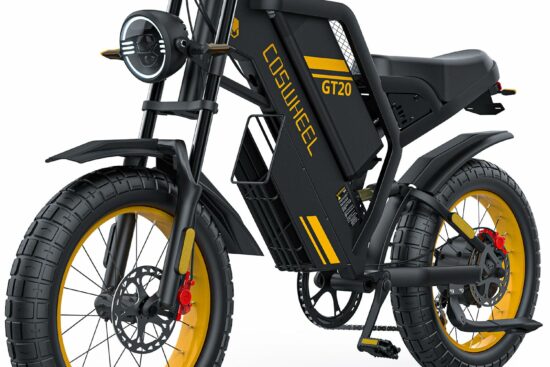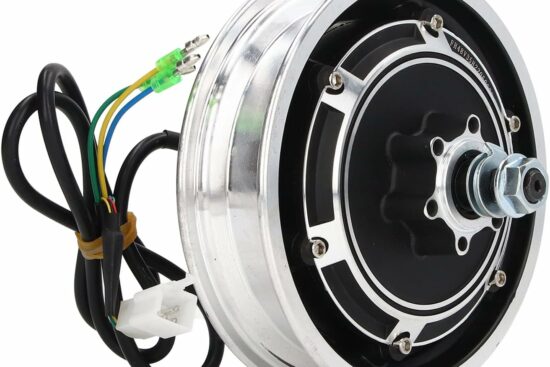
Electric bikes have gained significant popularity in recent years as a more sustainable and efficient mode of transportation. One may wonder, however, if these bikes can truly be relied upon for long-distance travel. By examining the capabilities and limitations of electric bikes, this article aims to determine whether they are a viable option for individuals seeking to venture long distances on two wheels.

Electric Bikes Overview
Definition of electric bikes
Electric bikes, also known as e-bikes, are bicycles that are equipped with an electric motor to provide assistance while pedaling. They are designed to make cycling easier and more accessible for a wide range of individuals. Electric bikes come in various styles and designs, but they all share the common feature of a motor that can be activated by the rider to augment their pedaling power.
Types of electric bikes
There are several types of electric bikes available in the market, each catering to different needs and preferences. Some common types include:
-
Commuter e-bikes: These are designed for daily commuting and typically feature a lightweight frame and comfortable riding position.
-
Mountain e-bikes: Built for off-road adventures, mountain e-bikes come with rugged frames, suspension systems, and knobby tires to tackle challenging terrain.
-
Folding e-bikes: Compact and portable, folding e-bikes are ideal for those with limited storage space or a need for easy transportation.
-
Cargo e-bikes: With a larger frame and extended cargo capacity, these bikes are suitable for carrying heavy loads, making them popular for delivery services and urban transportation.
By understanding the different types of electric bikes available, you can choose the one that best suits your specific needs and preferences.
Benefits of Electric Bikes
Eco-friendly transportation option
One of the main benefits of electric bikes is their eco-friendliness. They produce zero emissions while in use, helping to reduce air pollution and carbon footprint. Electric bikes are fueled by electricity, which can be generated from renewable sources, further minimizing their environmental impact. By opting for an electric bike over a car or motorcycle, you contribute to a cleaner and greener transportation system.
Health benefits
Contrary to popular belief, riding an electric bike can provide significant health benefits. While the motor assists with pedaling, you still engage in physical activity, albeit at a lower intensity compared to traditional cycling. Regular exercise has numerous health advantages, including improved cardiovascular fitness, increased muscle strength, and enhanced mental well-being. Electric bikes enable people of all fitness levels and ages to incorporate exercise into their daily routine.
Cost savings
Electric bikes offer considerable cost savings compared to traditional vehicles. With rising fuel prices, the cost of owning and maintaining a car can quickly add up. Electric bikes, on the other hand, require significantly less financial investment. They are more energy-efficient and have lower operating costs, as they primarily rely on electricity rather than gasoline. Moreover, electric bikes do not require license renewals, insurance, or parking fees, resulting in long-term savings for the rider.
Factors to Consider for Long-Distance Travel
Battery range
One of the primary considerations for long-distance travel on an electric bike is the battery range. The battery range signifies how far the bike can travel on a single charge. Different electric bikes offer varying ranges, with some capable of going up to 100 miles or more. It is crucial to assess your anticipated travel distance and ensure that your electric bike’s battery range aligns with your needs.
Charging infrastructure
Before embarking on long-distance travel, it is essential to consider the availability of charging infrastructure along your intended route. Electric bikes typically require charging stations or electrical outlets to recharge their batteries. Researching and planning your route to include charging stops or destinations with charging facilities is crucial to ensure you don’t run out of power during your journey.
Terrain and elevation
Long-distance travel often involves tackling various terrains and elevations. It is important to choose an electric bike that suits the terrain you will encounter. For example, if your route includes steep hills or rugged trails, a mountain e-bike with robust suspension and powerful motor will be more suitable. Understanding the terrain and elevation of your intended route will help you select the right electric bike to ensure a comfortable and efficient journey.
Weather conditions
Weather conditions can significantly impact your long-distance travel experience on an electric bike. Harsh weather, such as heavy rain or strong wind, can affect the performance and efficiency of the electric bike, as well as your overall safety. It is important to consider the climate and weather patterns along your route and plan accordingly. Investing in appropriate riding gear, such as waterproof clothing and wind-resistant accessories, can help mitigate the effects of adverse weather conditions.
Battery Technology
Types of batteries
Electric bikes utilize different types of batteries, each with its own advantages and disadvantages. The most common types of batteries used in electric bikes include:
-
Lithium-ion (Li-ion) batteries: These are the most popular and widely used batteries due to their high energy density, long lifespan, and lightweight design.
-
Nickel-metal hydride (NiMH) batteries: Although less common, NiMH batteries offer a good balance between cost, performance, and environmental impact.
-
Lead-acid batteries: These are the least expensive option, but they are also heavier, have shorter lifespans, and require regular maintenance.
When choosing an electric bike, it is important to consider the type of battery it uses and its specific attributes, such as capacity, charging time, and overall lifespan.
Battery capacity and range
Battery capacity refers to the amount of energy stored in the battery, while range indicates how far the electric bike can travel on a single charge. Higher-capacity batteries generally provide a longer range but may also be larger and heavier. It is crucial to assess your long-distance travel needs and select an electric bike with a battery capacity and range that aligns with your intended usage.
Battery lifespan and durability
the lifespan and durability of the battery are significant factors in the long-term performance of an electric bike. Lithium-ion batteries, in general, have a longer lifespan compared to other battery types, lasting several years with regular use and proper maintenance. Factors such as temperature, charging habits, and overall battery care can also impact longevity. Understanding the recommended maintenance and care instructions for the battery can help extend its lifespan and ensure optimal performance throughout your long-distance travels.

Charging Options
Charging time
The charging time for electric bike batteries can vary depending on the battery capacity and the charger used. Most electric bikes take anywhere from 2 to 6 hours to fully recharge their batteries. It is important to consider the charging time when planning your long-distance travel, as you will need to allocate time for recharging along your route. Additionally, some electric bikes offer fast-charging capabilities, allowing for quicker recharges when time is limited.
Charging stations
Charging stations are essential for long-distance travel on electric bikes. These stations provide access to electrical outlets, allowing riders to recharge their batteries. Depending on your route, it is crucial to identify and plan for charging stations along the way. Some areas may have a well-developed charging infrastructure, while others may have limited options. Researching the availability and locations of charging stations will help you map out your journey accordingly.
Portable chargers
In addition to traditional charging stations, portable chargers can be a valuable accessory for long-distance travel on electric bikes. These compact and lightweight chargers allow you to recharge your electric bike’s battery using any standard electrical outlet. Portable chargers provide convenience and flexibility, enabling you to recharge your battery wherever an outlet is available, whether it’s at a campground, hotel, or a friend’s house.
Performance and Speed
Motor power
The performance and speed of an electric bike are largely dependent on the motor power. The motor power is usually measured in watts and determines how much assistance the motor can provide while pedaling. Higher motor power translates to more torque and quicker acceleration, making it easier to navigate challenging terrains and maintain higher speeds. When considering long-distance travel, a more powerful motor can potentially enhance your overall riding experience and make the journey more efficient.
Speed limitations
Electric bikes typically come with speed limitations, which vary depending on local regulations and the bike’s design. In most countries, electric bikes are limited to speeds of around 20 mph (32 km/h) or lower when using the motor power. However, it is important to check the specific speed limitations imposed by local laws to ensure compliance and safety during your long-distance travels.
Pedal-assist vs throttle-only
Electric bikes offer two primary modes of operation: pedal assist and throttle-only.
-
Pedal assist: Pedal-assist mode engages the motor only when the rider is actively pedaling. The motor provides varying levels of assistance based on the rider’s pedaling effort. This mode is preferred by many cyclists as it provides a more natural riding experience and helps conserve battery power, making it ideal for long-distance travel.
-
Throttle-only: Throttle-only mode allows the rider to control the motor independently of pedaling. This mode is convenient for situations where the rider needs an extra burst of power, such as tackling steep inclines or accelerating from a standstill. However, throttle-only mode tends to drain the battery more quickly and may not be as efficient for long distances.
Choosing between pedal assist and throttle-only mode depends on your personal preferences and the specific requirements of your long-distance journey.
Comfort and Ergonomics
Frame design
The frame design of an electric bike plays a crucial role in comfort and ergonomics during long-distance travel. A proper frame design ensures a comfortable riding position, adequate space for leg extension, and stability. Electric bikes may feature different frame styles, such as step-through, diamond, or compact, each catering to different body types and riding preferences. It is important to consider your body geometry and desired riding position when selecting an electric bike for long-distance travel.
Suspension
Suspension systems on electric bikes help absorb shocks and vibrations from uneven road surfaces, increasing overall comfort during long-distance travel. Depending on the intended usage and terrain, electric bikes may feature front suspension forks, rear suspension systems, or full suspension setups. A well-designed suspension system improves ride quality, reduces fatigue, and enhances control, especially when encountering rough or off-road conditions.
Saddle and handlebar options
The choice of saddle and handlebar options heavily impacts rider comfort during long-distance travel. Electric bikes often offer various saddle shapes and materials, allowing riders to choose the most comfortable option for their unique needs. Additionally, adjustable handlebars enable riders to fine-tune their riding position, promoting proper ergonomics and reducing strain on the wrists and back. Considering these features while selecting an electric bike ensures a pleasant and ergonomic long-distance riding experience.
Storage and Luggage Capacity
Panniers and rear racks
For long-distance travel, having ample storage and luggage capacity is essential. Panniers, which are bags attached to side racks, offer a convenient solution for carrying gear and personal items. Rear racks provide additional space to mount larger bags or panniers. Electric bikes designed for long-distance travel often include provisions for installing panniers and rear racks, allowing you to carry essentials such as clothing, food, and camping gear.
Front baskets
Front baskets provide a convenient storage option for smaller items that require easy access, such as a water bottle, snacks, or a small bag. Electric bikes with front baskets allow you to keep necessary items within reach while riding, ensuring convenience and efficiency during long-distance travel.
Frame bags
Frame bags are another storage solution for long-distance travel. These bags attach to the frame of the electric bike and offer additional space to carry essentials. Frame bags are typically designed to fit snugly within the bike’s frame, minimizing the impact on bike handling and balance. They are ideal for storing tools, spare parts, or other items that need to be easily accessible while on the road.
Maintenance and Repairs
Common maintenance tasks
Like any other form of transportation, electric bikes require regular maintenance to ensure optimal performance and longevity. Common maintenance tasks include checking tire pressure, lubricating the chain, inspecting brake pads, and tightening bolts and screws. Regular maintenance helps prevent premature wear and tear, reduces the risk of mechanical issues during long-distance travel, and ensures a safe and enjoyable riding experience.
Repairs and spare parts availability
When considering long-distance travel on an electric bike, it is important to consider the availability of repairs and spare parts. Electric bikes have specialized components and systems that may require attention or replacement over time. Ensuring that spare parts are readily available and repair services are accessible along your planned route can save you from potential disruptions or delays during your journey.
Warranty considerations
Purchasing an electric bike with a comprehensive warranty is a wise decision, especially for long-distance travel. A warranty provides peace of mind and protection against unexpected malfunctions or defects. It is essential to review the warranty terms and conditions, including coverage duration, limitations, and any specific requirements. Understanding the warranty coverage will help you make an informed decision and ensure that you have support in case of any unforeseen issues during your long-distance travels.
Safety Considerations
Visibility
Maintaining visibility is crucial for safe long-distance travel on an electric bike. Ensure that your electric bike has proper lighting, including front headlights and rear taillights, to make yourself visible to other road users. Reflectors and reflective materials can also enhance visibility, especially during low-light conditions or at night.
Braking system
A reliable braking system is vital for safe travel, particularly during long-distance journeys. Electric bikes may be equipped with different types of brakes, such as rim brakes, disc brakes, or hydraulic brakes. It is essential to choose an electric bike with a braking system that offers sufficient stopping power and responsiveness. Regular brake inspections and maintenance should be conducted to ensure optimal performance throughout your travels.
Lights and reflectors
In addition to visibility, lights and reflectors play a crucial role in ensuring your safety while traveling long distances on an electric bike. Confirm that your electric bike is equipped with both front and rear lights, as well as reflective surfaces or strips on the frame, wheels, and pedals. These safety features enhance your visibility to motorists and pedestrians, reducing the risk of accidents and improving overall safety.
In conclusion, electric bikes can be a viable option for long-distance travel, offering numerous benefits such as eco-friendliness, health benefits, and cost savings. However, it is important to consider factors like battery range, charging infrastructure, terrain, and weather conditions when planning your journey. Understanding aspects such as battery technology, charging options, performance, comfort, storage, maintenance, and safety considerations is essential for a successful and enjoyable long-distance electric bike adventure. By taking these factors into account and selecting the appropriate electric bike model, you can embark on long-distance travels with confidence, convenience, and sustainability.




















